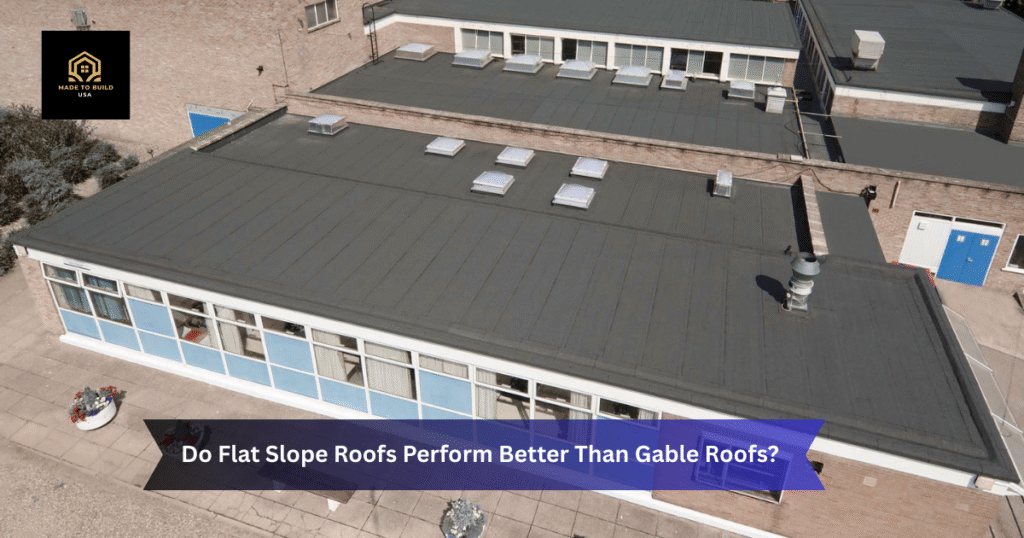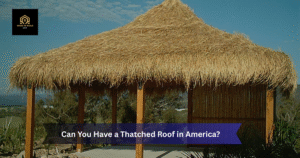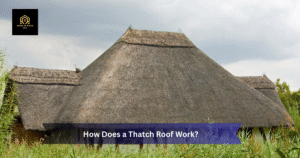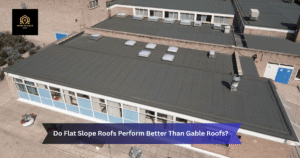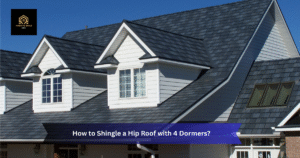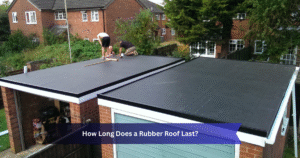When it comes to building or remodeling a home in the U.S., one of the most important choices you’ll face is the type of roof to install. Roofs are more than just coverings—they influence energy efficiency, curb appeal, and long-term maintenance costs. Among the most common roof styles are flat slope roofs and gable roofs, and homeowners often wonder which one performs better.
The truth is, neither option is universally “better.” The choice depends on your climate, budget, architectural style, and long-term goals.
Understanding Flat Slope Roofs
A flat slope roof (sometimes called a low-slope roof) isn’t perfectly flat; it has a very slight pitch to allow water drainage. These roofs are popular in modern U.S. architecture, especially in urban areas and contemporary-style homes.
Advantages of Flat Slope Roofs
- Modern Look – Flat slope roofs give homes a sleek, contemporary feel.
- Usable Space – Many homeowners use the flat surface for rooftop decks, gardens, or even solar panels.
- Easier Installation – They require fewer materials and can be more cost-effective to build initially.
- Accessibility – Flat roofs are easier to access for inspections, cleaning, or installing HVAC units.
Challenges of Flat Slope Roofs
- Drainage Issues – Water doesn’t run off as quickly, so proper waterproofing and maintenance are critical.
- Shorter Lifespan – Compared to gable roofs, they may need repairs or replacement sooner if not maintained.
- Climate Considerations – In areas with heavy snowfall or rain (like the Midwest or Northeast), they can be riskier without the right drainage system.
Understanding Gable Roofs
A gable roof is the classic triangular roof you’ll see on many American homes. It has a peak in the middle formed by two sloping sides.
Advantages of Gable Roofs
- Great Drainage – Their steep slope naturally directs rain, snow, and debris away.
- Classic Curb Appeal – Gable roofs fit traditional American home styles, from colonial to ranch homes.
- Durability – Properly built gable roofs withstand U.S. climates, especially in snowy or rainy regions.
- Ventilation – The attic space created under gable roofs helps with airflow, improving energy efficiency.
Challenges of Gable Roofs
- Higher Costs – Building and repairing gable roofs can cost more due to added materials and labor.
- Wind Resistance – In hurricane-prone states like Florida or coastal regions, gable roofs can be more vulnerable if not reinforced.
- Less Usable Space – Unlike flat roofs, you don’t get that extra outdoor living area.
Which Roof Is Better for U.S. Homes?
Where you reside and what you value most will determine which choice is “better.”
- Best for Modern Aesthetics & Extra Space: Flat slope roofs are perfect for homeowners in urban areas (like Los Angeles, Dallas, or Phoenix) who want a modern design and rooftop space.
- Best for Traditional Look & Harsh Weather: Gable roofs shine in areas with heavy rain, snow, or storms (like Chicago, Boston, or Denver) because of their superior drainage and durability.
If you’re considering resale value, gable roofs often appeal to a wider audience since they’re the classic American roof style. However, flat slope roofs can set your home apart in competitive real estate markets with modern buyers.
Expert Tips Before Choosing Your Roof
- Consider Your Climate – If you’re in a stormy or snowy region, gable may be safer. In dry, warm areas, flat slope roofs are often more practical.
- Think About Long-Term Maintenance – Flat roofs require more upkeep, while gable roofs usually last longer with less effort.
- Match Your Home Style – A flat slope roof may clash with a farmhouse-style home, while a gable might not fit a minimalist design.
- Factor in Budget – Flat slope roofs can be cheaper upfront, but gable roofs may save money long-term by lasting longer.
- Talk to a Local Contractor – Roofing isn’t one-size-fits-all. Local professionals understand building codes, weather conditions, and the best materials for your area.
